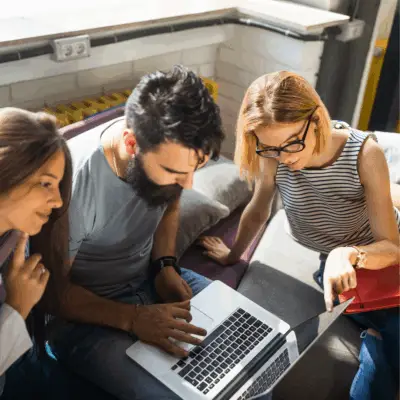Pivoting your business from offline to online can seem like a big leap, but it’s a move that can open up a world of opportunities. Whether it’s due to changing market trends, shifting consumer habits, or just a desire to expand your reach, going digital is the way forward. Here’s a guide to help you smoothly transition your business into the online world.
Step 1: Take Stock of Your Current Situation
First things first, you need to assess your current setup. Ask yourself:
- What do I sell? Can my products or services be sold online?
- Who are my customers? Will they be comfortable engaging with me online?
- How do I sell now? Can these methods be translated to online channels?
- What resources do I have? Do I have the tools, skills, and resources to support an online transition?
Step 2: Plan Your Online Strategy
A solid online strategy is key to success. Here’s what to think about:
- Design Your Customer Experience: Map and plan your customer’s experience throughout their journey to solving their problem.
- Select the best Digital Platform for your goals: Your platform is your online home. Make sure it’s user-friendly, looks great on mobile devices, and is easy to navigate.
- Digital Marketing: Develop a plan that includes SEO, content marketing, social media, email campaigns, and eventually paid ads.
Step 3: Use the Right Tools
Technology can make your life a lot easier. Consider these essentials:
- Customer Relationship Management (CRM): Helps manage customer data and interactions.
- Payment Gateways: Ensure your customers can pay easily and securely.
- Analytics Tools: Tools like Google Analytics can help you understand what’s working and what’s not.
- Automation Software: Automate tasks like email marketing and social media posting to save time.
Step 4: Adapt Your Products or Services
You might need to tweak what you offer to suit the online world. For example:
- Digital Products: Can you productize your services into digital versions, like coaching, e-books or online programs?
- Subscription Services: Offer subscriptions to create steady income.
- Personalization: Use data to offer personalized products or services.
Step 5: Focus on Customer Experience
Keeping your customers happy is even more important online. Here’s how:
- User Experience (UX): Make sure your customer experience system easy to use with clear calls to action.
- Customer Support: Offer support via live chat, email, and phone. AI-driven chatbots can help with quick responses.
- Recognition Programs: Reward your customers with loyalty programs, discounts, and special offers.
Step 6: Train Your Team
Your team will need new skills for this new adventure. Make sure they’re trained in:
- Digital Tools and Platforms: They need to know how to use the new tools.
- Customer Service: Handling online customer service can be different from in-person.
- Digital Marketing: Your marketing team should be equipped to run and manage online campaigns.
Step 7: Keep an Eye on Things and Be Ready to Adjust
Once you’re online, keep track of how things are going and be ready to make changes. Important metrics include:
- Platform Tracking: Look at how many people are engaging, what they’re viewing, and how long they stay.
- Sales and Conversion Rates: Track your online sales and see how effective your marketing is.
- Customer Feedback: Regularly gather and analyze feedback to see where you can improve.
In Conclusion
Moving your business from offline to online can be a game-changer. With careful planning, the right tools, and a focus on customer experience, you can unlock new opportunities and ensure your business thrives in the digital world. Embrace the change, stay flexible, and watch your business grow!

Case Study
Want an example? In 2020 Altman Fitness was forced to shift their workouts online. Learn how that event caused a permanent shift to this business as they pivoted offline to online.
See case study







